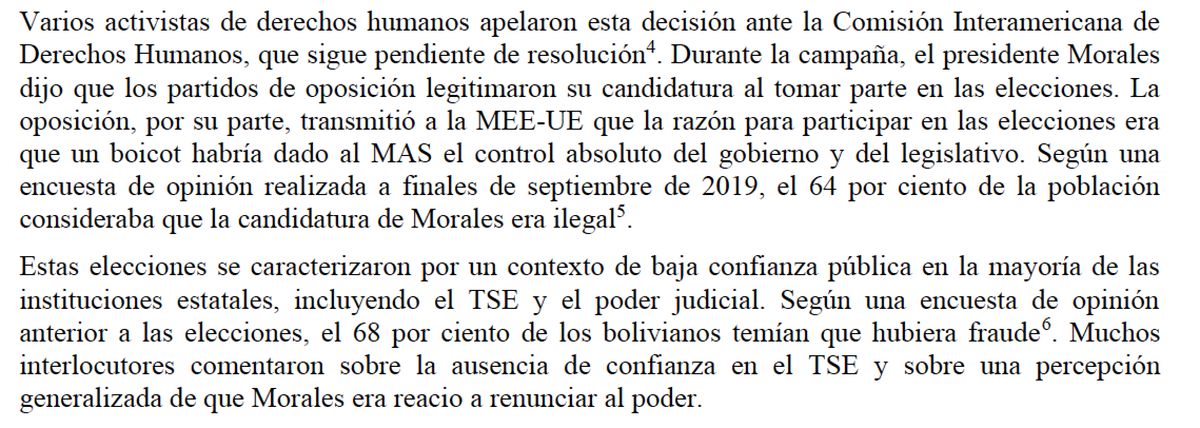-
#BoliviaEnCrisis So the WashPost published a statistical analysis of alleged #FraudeElectoral in Bolivia's 2019 elections by @JohnCuriel14 & @Master0fNull at @MITelectionlab. It (1) sidesteps most critiques of the election; (2) doesn't evaluate forms of "fraud" ID'd by OAS & EU.
-
@JohnCuriel14 @Master0fNull @MITelectionlab The analysis was performed in December in an effort to replicate or contest earlier analysis performed by @ceprdc. I have raised questions about both analyses before, but the issues I'm talking about in this thread are not statistical.
-
@JohnCuriel14 @Master0fNull @MITelectionlab @ceprdc As I've discussed before, the OAS and EU evaluated the integrity of the election, its trustworthiness, and freedom from bias that could swing the outcome. Movements in the street read any and all failures on these metrics as "fraud," which is a more narrow thing.
-
@JohnCuriel14 @Master0fNull @MITelectionlab @ceprdc Definitions of election integrity, bias, irregularity, and fraud are in this thread… @CarwilBJ/1208377715595862019
-
@JohnCuriel14 @Master0fNull @MITelectionlab @ceprdc Polling before the election showed that substantial majorities believed Evo Morales' bid for re-election was illegal (64%; the constitution's text limits him to two terms) and feared fraud (68%). Clip from EU observer mission's report.
-
So the OAS accusations did not originate concern about fraud, that was there all along. A series of irregularities in the first 72 hours after the vote propelled a cascade of concern and outrage about suspected fraud, most notably the 24-hour pause in the TREP rapid count.
-
Under pressure from this movement the Morales government agreed to cooperate with an OAS audit mission and that its results would be binding. The mission released a preliminary report early on November 10, and a final report in December. EU observers made their own report.
-
Again, the audit's standard was election integrity and detection of irregularities, not proof of fraud. The OAS found the election's integrity was compromised by partisan electoral officials, poor electronic chain-of-custody, vulnerability of servers to manipulation…
-
Also the OAS found statistical differences, not between the 84% of votes in the pre-pause TREP and the remainder, but in a specific 5% of precincts. I have no idea why CEPR and MIT researchers have not focused on replicating or disputing these findings. I'm sincerely curious.
-
Update on this: @Master0fNull has pointed out that this anomalous 5% in the OAS audit appeared due to a miscoding of timecodes, discrediting this part of the OAS audit.
-
This kind of failure in the audit is much more likely to stem from motivated reasoning than deliberate misrepresentation, imho, but read it as you will.
-
Here are summaries of the auditors' findings: OAS November: @CarwilBJ/1193507008001040388 OAS December: @CarwilBJ/1203066351469912065
-
Continuing this in a new thread to focus on the heart of the matter…
-
Second thread is here: @CarwilBJ/1233414673992687624?s=19
